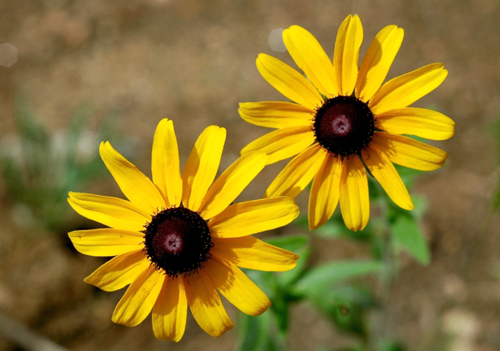If you didn’t get the flowers you were hoping for this Valentine’s Day, there’s one way to ensure that you’ll never go without: Grow your own.
University of Georgia Cooperative Extension has many resources to help you create a cut-flower garden that can provide you with a gorgeous pick-me-up bouquet, whether it’s Valentine’s Day or any other day.
If you'd like a garden that you can harvest on a weekly basis, you need to know a couple of things. One, it's time to get started, and two, if you don't cut them, you'll lose them.
It's true. Most cut flowers do best when cut regularly. Otherwise, they go to seed and stop flowering.
They aren't hard to grow. It's easier and less costly to grow them from seed. Almost all annual cut flowers are grown from seed.
Perennial cut flowers, such as Japanese irises, often require an extra year of growth before becoming truly productive. When you can't grow them from seed, or when it's important to perpetuate certain traits, you can propagate them from cuttings or divisions. Either way, it's easy.
Planting time and conditions
Most annual cut flowers will grow best if you plant the seed directly onto the soil surface in mid- to late fall. If the mix of flowers you want has many tender annuals, you can plant them in early to mid-March.
Perennial cut flowers are best planted as seed in late summer. Keeping the seed moist in August can be tricky, though. You may want to buy young plants. But you can do well with seed if you prepare a good seedbed.
You need not do anything special for wildflowers. Just eliminate the weeds, till the soil at least 4 inches deep, rake it smooth and then seed it. A light peppering of fertilizer, not too much, can help roots grow.
Most cut flowers require full sun. Any level, open area will do nicely. If the soil is very poor, add compost. Your main goal is to have well-drained soil.
Cut flowers are vulnerable to winds from storms or driving rain. Fences, or staking, can make damage less likely. If you grow them in large colonies, the collective stems can support each other.
Many seeds will germinate as soon as they ripen or dry. Others may require moist or dry chilling, or freezing. When collecting cut flower seed, do a bit of research on the seed’s dormancy requirements, if any. Still others may benefit from a chemical or physical treatment to help break down hard seed coats. Some may have combinations of these requirements. Learn as much as you can about what your seed requires.
Don't bury, dry or fertilize seeds to death
Don't bury the seed. Broadcast it on the surface and barely rough it in by smoothing it down with the back side of a hard rake. This is how nature intended it.
In some cases, seeds are slow to germinate or seedlings slow to develop. Be patient. Some seeds planted in fall may not germinate until March or April.
Be careful not to let the seeds or seedlings dry out. Protect them from frequent, soil-compacting tramplings. Don't let them get covered up with leaves. You may need to pull large weeds, too.
Most cut flowers only need to be fertilized in early spring, just as the plants begin to grow. Use a half-pound per 100 square feet of bed.
Fertilize again after the first large harvest of stems, and heavily water just after you fertilize. With repeated cutting, most cut flowers will produce four to five generations of flowers per summer.
For more information about cultivating a cutting gardens, visit extension.uga.edu or call 1-800-Ask-UGA1.








